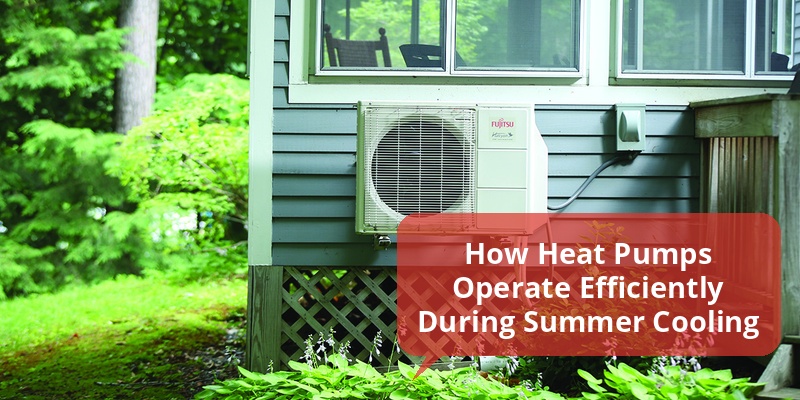Heat pumps are widely recognized for their ability to provide efficient heating in cold months, but their role in summer cooling is equally important. By reversing their refrigeration cycle, heat pumps can effectively cool indoor spaces, offering an energy-efficient alternative to traditional air conditioning systems. This article explores the mechanics of heat pumps during summer, their energy benefits, system types, maintenance tips, and how to optimize their performance for cooling in hot weather.
| Feature | Details |
|---|---|
| Function in Summer | Reverses cycle to remove heat from indoors and release it outside |
| Energy Efficiency | Uses less electricity than traditional AC due to heat transfer technology |
| Types of Systems | Air-source, ground-source (geothermal), and ductless mini-splits |
| Maintenance Tips | Filter cleaning, coil maintenance, thermostat calibration |
| Optimization Methods | Proper sizing, regular servicing, programmable thermostats |
How Heat Pumps Cool Your Home During Summer
In summer, heat pumps act as air conditioners by absorbing indoor heat and transferring it outside. They rely on a refrigeration cycle involving a circulating refrigerant that absorbs heat from indoor air across the evaporator coil. The refrigerant then compresses and releases this heat outdoors through the condenser coil. This process effectively lowers indoor temperatures without generating heat through electric resistance, resulting in more energy-efficient cooling than conventional air conditioning units.
Types of Heat Pumps Used for Summer Cooling
There are several types of heat pumps designed for summer cooling, each suited to different climates and installation needs:
- Air-Source Heat Pumps (ASHP): The most common, extracting heat from the outdoor air and moving it inside or outside as needed.
- Ground-Source (Geothermal) Heat Pumps: Utilize stable underground temperatures, offering highly efficient cooling by transferring heat to the ground.
- Ductless Mini-Split Systems: Ideal for homes lacking ductwork, providing zone-specific cooling with flexible installation.
Energy Efficiency Benefits of Heat Pumps in Summer
Heat pumps are known for their superior energy efficiency during cooling compared to traditional air conditioners. They transfer heat rather than generate it, often resulting in:
- Lower Electricity Consumption: Heat pumps typically use 30-40% less electricity than standard central AC units.
- Reduced Carbon Footprint: Efficient energy use means lower greenhouse gas emissions when paired with clean electricity sources.
- Cost Savings: Energy savings translate to reduced utility bills during high-demand summer months.
Key Factors Affecting Heat Pump Performance in Summer
Several factors can influence how effectively a heat pump cools during the summer season:
- Proper Sizing: An oversized or undersized heat pump can reduce efficiency and comfort.
- Installation Quality: Proper placement and insulation of outdoor units affect heat transfer.
- Climate Considerations: In very hot or humid climates, supplemental cooling may be needed.
Maintenance Tips to Ensure Efficient Summer Operation
Regular maintenance helps keep heat pumps performing optimally during summer cooling:
- Clean or Replace Air Filters: Dirty filters restrict airflow and reduce cooling capacity.
- Inspect and Clean Coils: Evaporator and condenser coils should be free of dirt and debris.
- Check Refrigerant Levels: Proper refrigerant ensures efficient heat transfer.
- Thermostat Calibration: Accurate thermostats maintain your desired temperature efficiently.
- Professional Tune-ups: Annual inspections by certified technicians preserve system longevity and performance.
Tips to Optimize Heat Pump Cooling Efficiency in Summer
To maximize efficiency and comfort during the hot season, consider these strategies:
- Use Programmable Thermostats: Adjust temperatures during peak hours to reduce energy usage.
- Seal and Insulate Your Home: Prevent cool air loss through windows, doors, and ductwork.
- Shade Outdoor Units: Placing units in shaded areas enhances performance by decreasing outside temperatures.
- Utilize Ceiling Fans: Fans help circulate cool air, allowing thermostat settings to be higher.
- Avoid Heat-Generating Activities: Limit use of ovens and other heat sources during peak cooling periods.
Comparison of Heat Pumps and Traditional Air Conditioners for Summer Cooling
| Feature | Heat Pumps | Traditional Air Conditioners |
|---|---|---|
| Cooling Efficiency | Highly efficient; transfers heat | Efficient but often less than heat pumps |
| Heating Capability | Provides both heating and cooling | Cooling only |
| Energy Use | Typically lower overall energy use | May consume more electricity during heavy use |
| Initial Cost | Higher installation cost due to dual function | Generally lower upfront cost |
| Maintenance | Requires professional maintenance for refrigerant and components | Requires maintenance mainly on cooling components |
